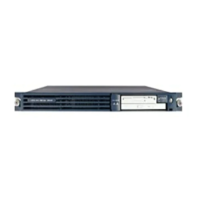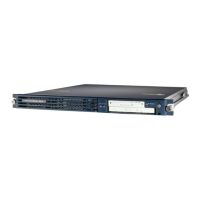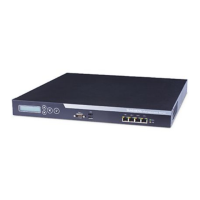8-26
Cisco Unified Communications Manager Managed Services Guide
OL-22523-01
Chapter 8 Industry-Standard Management Information Base
SYSAPPL-MIB
sysApplPastRunTableRemItems, sysApplPastRunTblTimeLimit, sysApplElemPastRunMaxRows,
sysApplElemPastRunTableRemItems, sysApplElemPastRunTblTimeLimit,
sysApplAgentPollInterval }
STATUS current
DESCRIPTION
The system application run group contains information about applications and associated elements
which have run or are currently running on the host system.
::= { sysApplMIBGroups 2 }
sysApplMapGroup OBJECT-GROUP
OBJECTS { sysApplMapInstallPkgIndex }
STATUS current
DESCRIPTION
The Map Group contains a single table, sysApplMapTable, that provides a backwards mapping for
determining the invoked application, installed element, and installed application package given a
known process identification number.
::= { sysApplMIBGroups 3 }
Troubleshooting
The following subsections have troubleshooting tips:
• Linux and Cisco Unified CM Releases 5.x, 6.x, 7.x, page 8-26
• Windows and Cisco Unified CM Release 4.x, page 8-26
• Using Servlets in Cisco Unified CM 7.x, page 8-27
• Frequently Asked Questions, page 8-28
Linux and Cisco Unified CM Releases 5.x, 6.x, 7.x
Collect the following logs and information for analysis. Execute the command file get activelog <paths
below>'
• SNMP Master Agent Path : /platform/snmp/snmpdm/*
• System Application Agent Path: /platform/snmp/sappagt/*
Windows and Cisco Unified CM Release 4.x
Collect the following logs and information for analysis:
• Set the sysapp trace level to Detailed as follows, Enable TraceEnabled to "true" and TraceLevel to
3 from Registry HKEY_LOCAL_MACHINE\SOFTWARE\Cisco Systems,
Inc.\SnmpSysAppAgent.
• Once you have edited it, restart the SNMP Service from the Services tab. You will see a trace file
C:\Program Files\Cisco\bin\SnmpSysAppImpl.log created.
• Run a snmpwalk on the sysApplInstallPkgTable.
• Run a snmpwalk on the SysApplRunTable.

